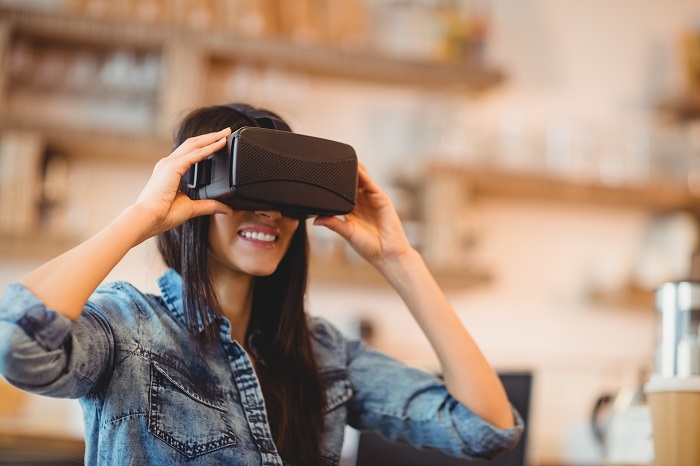Let’s do a thought experiment. Try to think back just a bit to the time before ChatGPT and generative AI took over the enterprise and dominated the discourse, development and discussions in the HR technology industry.
Before we became immersed in gen AI, at least some of the technology industry was preparing for a different kind of immersion—in the metaverse. The metaverse offered an exciting and new spin on an existing concept where users, in the form of avatars, could navigate and interact with each other and an environment in a three-dimensional virtual world.
But a combination of factors made it easy to forget how excited we were about the potential of VR. Primarily, it was the expensive and uncomfortable VR headsets required to experience the metaverse (and other VR experiences). Then, there was the tech community’s collective glee in dunking on Facebook and Mark Zuckerberg (who famously sunk billions of dollars into what has so far been a disappointing foray into the metaverse). And, of course, then came the disruption of pandemic-related workplace challenges and, finally, the emergence of generative AI.
While it became easy to get distracted by these developments—especially the immediacy, ease of use and “cool” factor of generative AI—the metaverse and VR have not gone away. In fact, perhaps generative AI may serve as a catalyst for organizations to derive more value from VR moving forward. Let’s think about how the complementary nature of these tools can potentially unlock more value together than by themselves.
Despite the negative publicity that seems to accompany the metaverse, largely based on Meta/Facebook having seen disappointing consumer adoption of its VR hardware and virtual environments, the metaverse conceptually seems to align more directly with the workplace and enterprise use cases. For organizations, the metaverse has and will provide opportunities for employee learning and development, onboarding, collaboration and more.
Observers of the HR technology market and some progressive organizations are certainly aware of the applicability of VR technology and solutions to solve workplace challenges, particularly in learning and training. And there have been notable enterprise success stories. For instance, pioneering HR technology provider STRIVR has been delivering virtual reality training for years, with published case studies from companies like Walmart, Bank of America and Sprouts Markets. But despite these notable successes, widespread enterprise adoption of the metaverse and VR remains elusive.
Here is where the power and emerging capabilities of generative AI can enhance and augment VR, help unlock additional value and increase accessibility and adoption. Generative AI technology is proving to be extremely capable of generating content—text, images, audio, video, etc. When trained with the right data set—and with suitable mechanisms to test, iterate and improve its outputs—gen AI is a powerful content creation tool for multiple enterprise use cases (including HR).
Learn more about HR tech trends in 2024 at the free, online HR Tech Virtual Conference, Feb. 27-29. Click here to register.
Since one of the biggest challenges to creating VR learning and other immersive experiences (beyond the hardware challenges) is content-related, generative AI has a lot to offer developers of VR learning and other employee experiences in these domains. Creating the actual content is hard and can be a significant barrier to adoption. It is often time-consuming, expensive to generate and complicated to deploy at scale. It’s not that different from designing a movie set or a modern video game.
Think about all the components required to create an engaging, authentic and meaningful experience in a VR setting that will provide employees with a close relationship to the environment they will encounter on the job. There are locations, buildings, rooms, fixtures and other features to create.
Plus, the environment needs people/characters, actions, voices and sounds that make up a fully realized scene. Often, these elements must be customized for the specific organization. In other words, the VR environment can’t just be a generic office location, but “Acme HQ in Lincoln, Neb.”
Therefore, it would not be surprising for it to take months for organizations to design, develop and deploy a VR training or onboarding environment. It often necessitates filming multiple scenarios, building custom animations and interactions, recording vast amounts of sound and dialogue, and combining all these elements into a cohesive and effective experience.
Generative AI can help write training outlines and full scripts, generate assets like images and 3D structures, and create detailed scenarios, which can dramatically speed up the time needed to deploy customized VR environments. The technology can also create learning objectives and desired outcomes and even produce a full plot and script.
It can then convert the script into “live” character speech and dialogue. After having been trained in an organization’s library of images of sites, buildings, equipment, etc., it can create the needed background and foreground images and settings that comprise the VR scenes.
See also: How ChatGPT and other generative AI tools are transforming HR jobs
Additionally, much in the same manner that generative AI can quickly create multiple and targeted versions of content for advertising (think, different messaging of an advertisement based on some personal attributes of the viewer), it will also be able to generate and scale more hyper-personalized VR environments. These can be designed to support and enable each user individually based on their needs and attributes.
While some of the gen AI and training models needed to enable this capability might not be available yet, the trajectory of AI advancement suggests that it should not be too long before the technology is ready.
In 2024, I expect that the HR technology conversation will again be dominated by generative AI. As we collectively explore the new-gen AI solutions emerging and think about the potential of the technology, let’s take some time to think creatively and expansively about its true potential.
Said another way, while using generative AI to create job descriptions or suggest content for an employee performance review is very cool, let’s remember to think about what else gen AI may be capable of—like automatically creating virtual and immersive environments, tailored to the individual user, that can take hundreds, if not thousands, of users through simulations.
Sound far-fetched? So did a free tool that can draft a 1,000-word article in 15 seconds on just about any topic you can imagine.
Happy 2024. I hope this will be a fantastic year in HR technology!
Disclaimer: Gen AI did not create this article.
Credit: Source link











